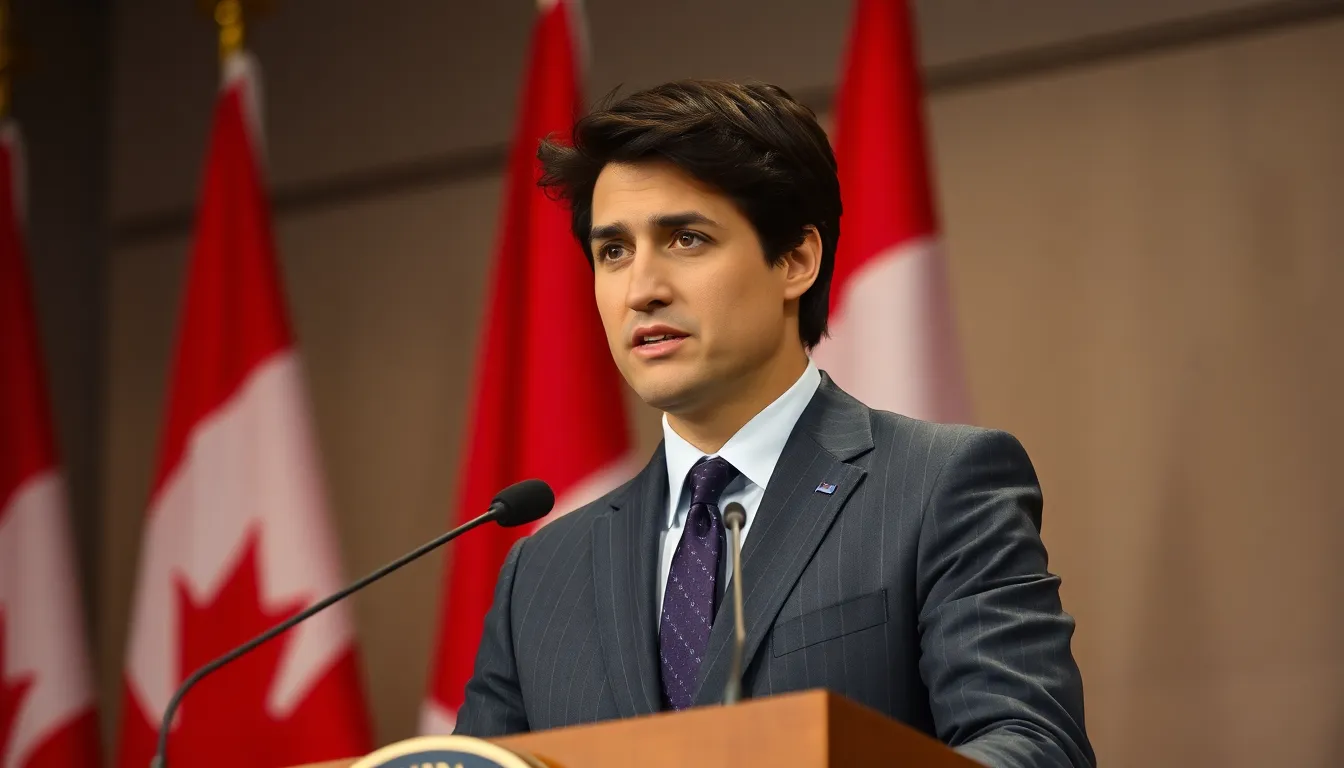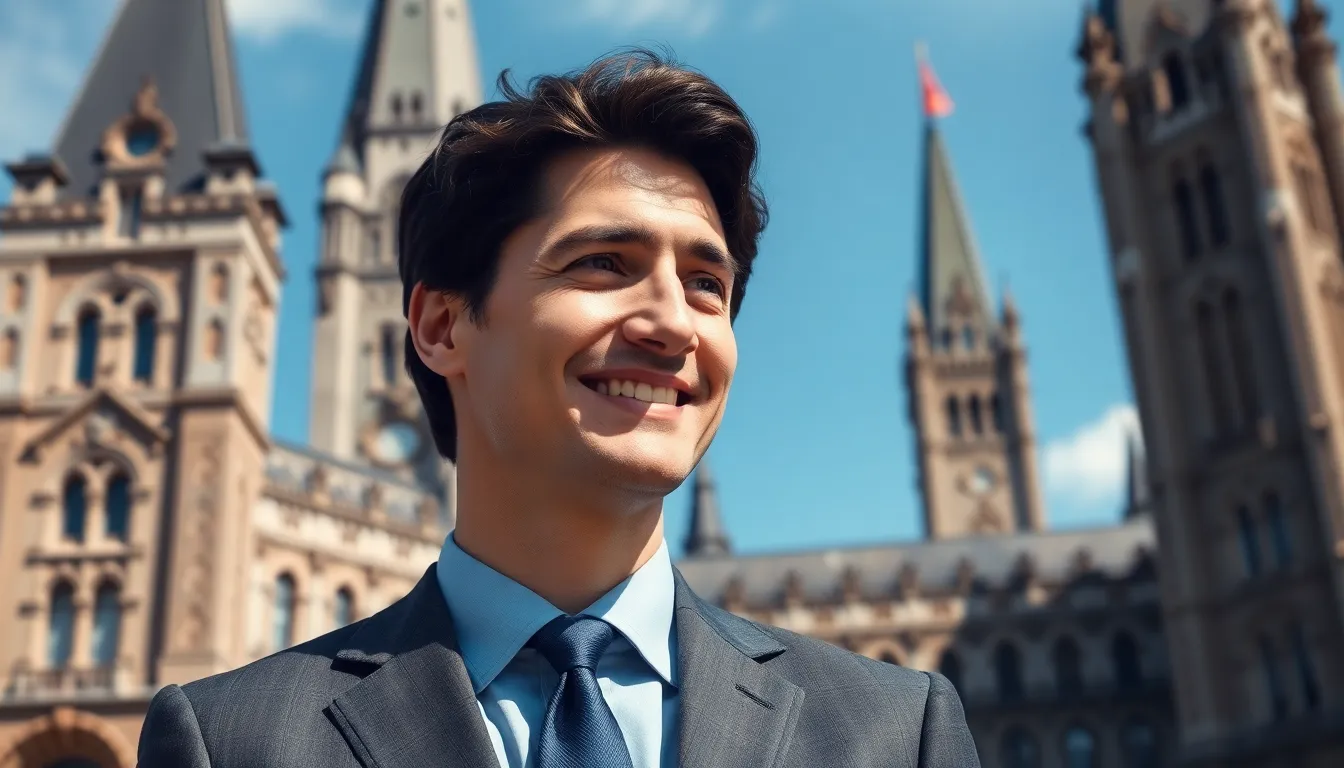As Canada’s Prime Minister, Justin Trudeau has sparked plenty of conversations—and a few controversies—since stepping into office. With his trademark socks and sunny disposition, he’s made headlines for both his policies and his personality. But as the political landscape shifts, many are left wondering: when will Trudeau pack up his maple leaf-adorned briefcase and bid farewell to the House of Commons?
Table of Contents
ToggleCurrent Political Landscape
The political landscape in Canada remains dynamic as Justin Trudeau continues his tenure as Prime Minister. His leadership influences various sectors and political discussions.
Overview of Trudeau’s Leadership
Trudeau’s administration emphasizes social progress, climate change initiatives, and economic recovery strategies. His government advocates for diversity and inclusion while addressing important issues such as healthcare and education. Under his guidance, Canada has witnessed a focus on sustainability and innovation. Public reactions to his decisions vary, reflecting both strong support and notable criticism. His charismatic approach attracts attention, leading to heightened engagement from citizens in political matters.
Recent Political Developments
Recent developments significantly impact Trudeau’s leadership and future. A minor cabinet reshuffle occurred in October 2023, aimed at enhancing government efficiency. Polling data indicates fluctuating public approval ratings, which could influence upcoming elections. Furthermore, ongoing debates regarding the economy and environmental policies challenge Trudeau’s position. Notably, opposition parties are gaining traction, signaling potential shifts in parliamentary dynamics. Political analysts closely monitor these trends, as they may affect Trudeau’s potential decision to step down from his role.
Factors Influencing Departure

Trudeau’s potential departure involves numerous influences, which shape his leadership trajectory. These factors include public opinion, party dynamics, and internal pressures.
Public Opinion and Approval Ratings
Public opinion holds significant sway over Trudeau’s leadership stability. Current approval ratings fluctuate, showcasing periods of both high support and notable dissent. With a recent approval rating of 37% as of October 2023, many view economic and environmental policies critically. Increased scrutiny surrounding healthcare and education proposals also affects public perception. As consequences of these sentiments unfold, they demand attention from Trudeau’s administration. Acknowledging voter concerns while maintaining his agenda remains essential. Analysts argue that sustained low approval ratings could trigger calls for leadership changes.
Party Dynamics and Internal Pressure
Party dynamics play a crucial role in shaping decisions within Trudeau’s administration. Internal party debates surrounding policy directions create pressure on his leadership. Upcoming elections introduce urgency among party members to present a unified front. Some factions may challenge Trudeau’s strategies, seeking a shift in priorities. Loyalty among party members varies, with some expressing concern over electoral viability. Shifts in support could influence his decision to step down. The balance of power within the Liberal Party directly impacts both Quebec and national representation. Overall, these dynamics could dictate Trudeau’s political fate.
Speculated Timelines
Speculations about when Justin Trudeau might leave office encompass various factors influencing his political trajectory. Analysts explore upcoming elections and historical context to gauge potential scenarios.
Upcoming Elections and Political Future
Upcoming elections significantly affect Trudeau’s political future. Social dynamics and public sentiment shape voter priorities. In 2025, a federal election looms, urging political parties to strategize effectively. Recent approval ratings of 37% indicate possible challenges for the Liberal Party. Maintaining such figures invites scrutiny from party members and voters alike. Should public support decline further, increased pressure for leadership change could arise within the party. Awareness of grassroots concerns and electoral viability remains crucial for Trudeau’s administration as it navigates this evolving landscape.
Historical Precedents in Canadian Politics
Historical precedents in Canadian politics offer insight into Trudeau’s potential departure. Prime Ministers typically serve around four to five years before facing reelection challenges. Observing past administrations reveals patterns of leadership changes influenced by public dissatisfaction. For instance, former Prime Minister Stephen Harper faced significant pressure after unfavorable polling. Decisions around electoral viability and party unity often led to earlier than expected exits. Awareness of these dynamics suggests Trudeau’s options hinge on evolving public sentiment and the political landscape.
Implications of Trudeau’s Departure
Trudeau’s potential exit from office poses significant implications for Canadian politics and society. His leadership directly affects the direction of the Liberal Party and related policies.
Effects on Liberal Party
A transition in leadership could reshape the dynamics within the Liberal Party. Internal factions may seek to influence the next leader’s priorities and agenda. The party could experience a shift in strategy aimed at improving public approval ratings, especially with a federal election approaching in 2025. Potential candidates will emerge, focusing on rejuvenating party image and appealing to younger voters. Additionally, current members may reassess their support for the platform, pivoting towards priorities that resonate with a broader electorate.
Impact on Canadian Policies
Trudeau’s departure could alter policy direction significantly. Economic initiatives might shift focus as new leadership takes charge. Climate change actions may also experience changes, especially in how aggressively government addresses environmental issues. Healthcare policies could see renewed emphasis on accessibility and affordability. Education reform is another area where strategies could evolve based on new leaders’ visions and priorities. Adaptations in these sectors would reflect public sentiment and needs, presenting an opportunity for a fresh start in addressing long-standing challenges.
The future of Justin Trudeau’s leadership remains uncertain as various factors converge in the Canadian political landscape. With public approval ratings hovering around 37% and increasing scrutiny on his administration’s policies, the pressure for change is palpable. The upcoming 2025 federal election will serve as a critical juncture for both Trudeau and the Liberal Party, potentially dictating the direction of Canadian politics.
As discussions about his potential departure intensify, the implications for the Liberal Party and its future strategies cannot be overlooked. A leadership transition could bring fresh perspectives and renewed focus on key issues that resonate with voters. Ultimately, Trudeau’s next steps will hinge on public sentiment and the evolving dynamics within his party as Canada navigates its political future.

